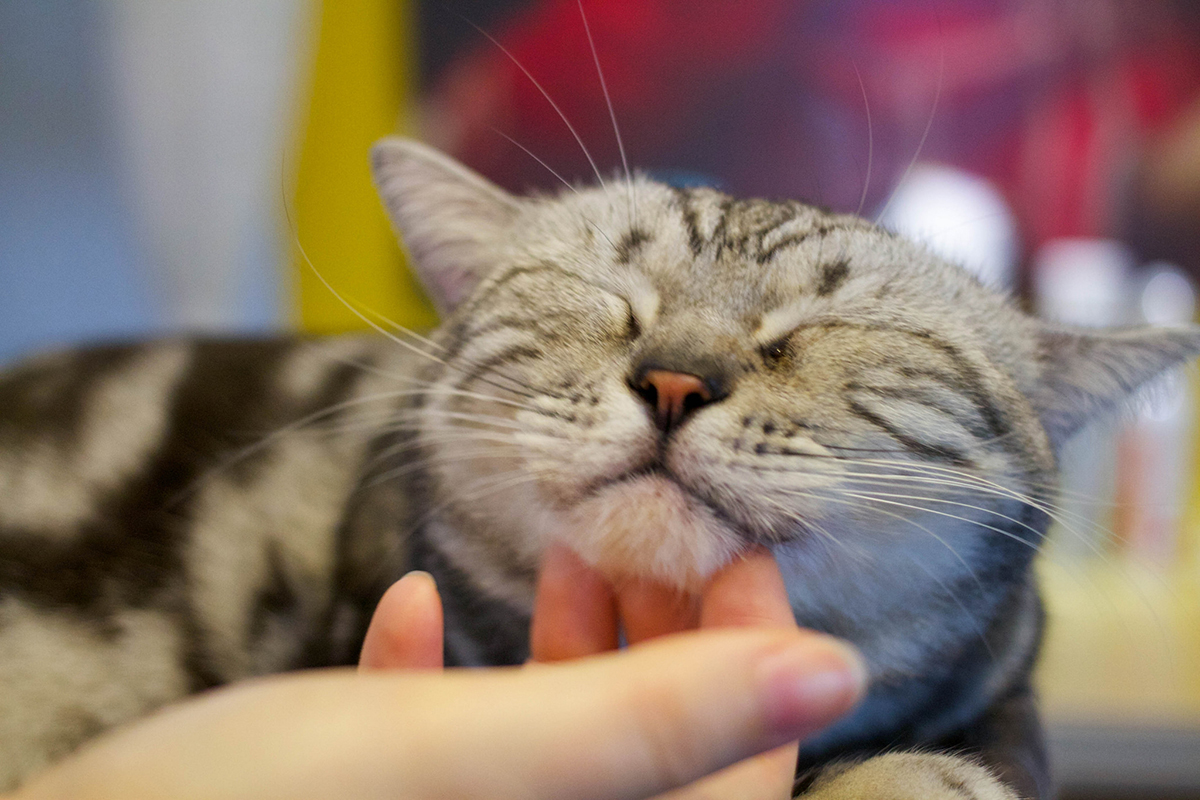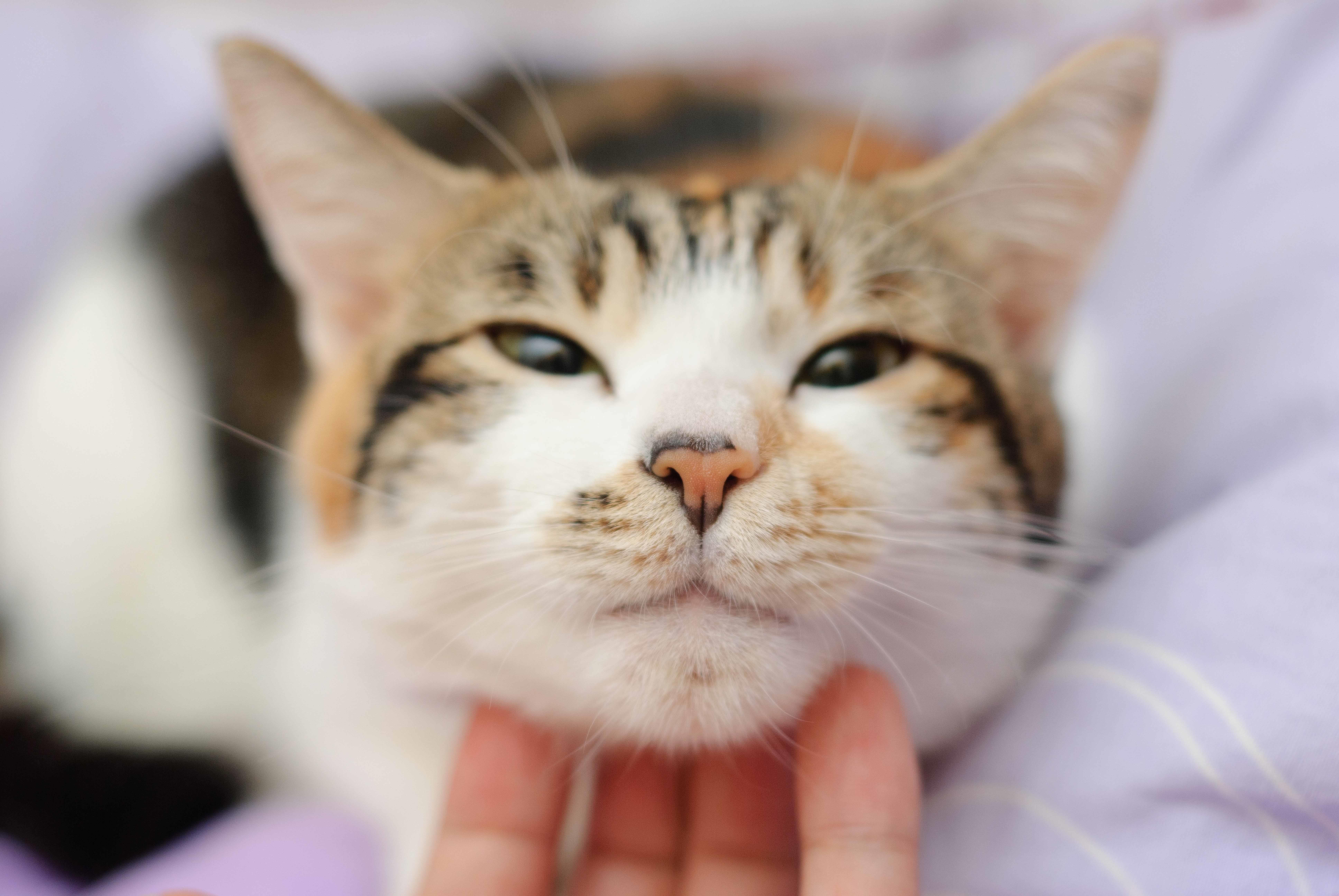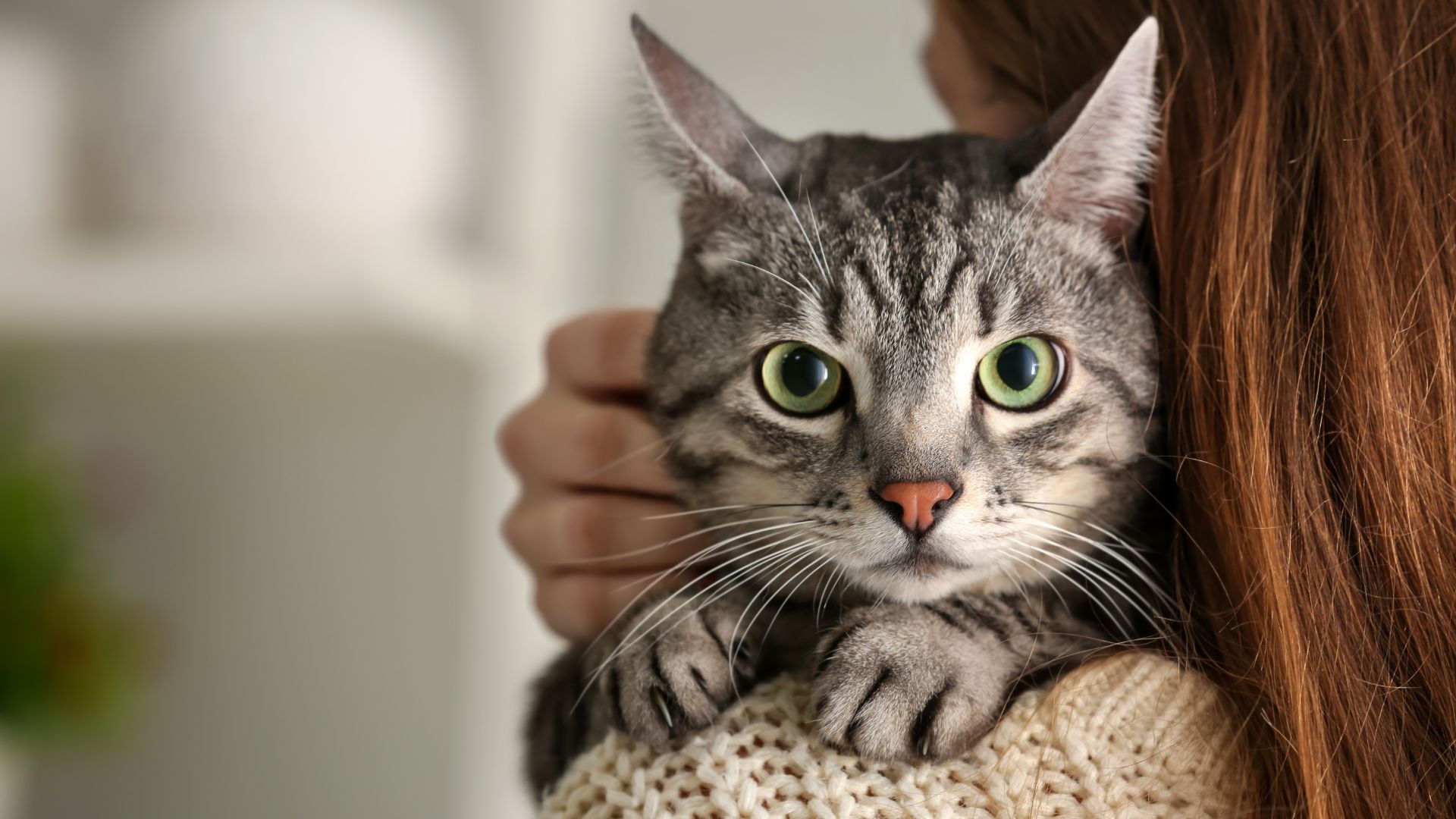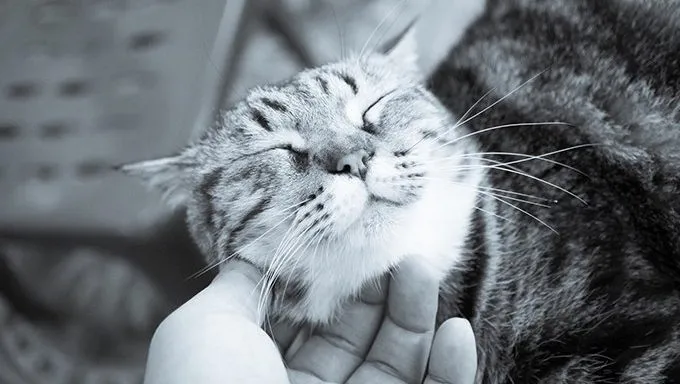Physiological Reasons for Purring
Pain Relief and Healing

Cats purr when they are content, relaxed, and feeling safe. However, purring has also been linked to various physiological reasons, including pain relief and healing.
Physiological reasons for purring in cats include:
Vibrational Stimulation
Muscle Relaxation
Reduction of Inflammation and Swelling
Pain Relief through Release of Endorphins
Research has shown that cats purr when they are in a state of relaxation, but also when they are experiencing pain or discomfort. The exact mechanisms behind this phenomenon are still not fully understood, but it is believed to be related to the release of certain chemicals and hormones in the body.
One theory is that purring creates a soothing, vibrational stimulus that helps to relax tense muscles and calm the nervous system. This can lead to a decrease in stress levels and an overall feeling of well-being.
Purring may also be linked to the release of endorphins, which are natural pain-relievers produced by the body. Endorphins have been shown to reduce sensitivity to pain, leading to feelings of relaxation and comfort.
In terms of healing, purring has been found to increase blood flow and promote bone growth in animals, including cats. This may be due to the increased oxygenation of tissues and the stimulation of collagen production, which is an essential component of healthy tissue repair.
While further research is needed to fully understand the mechanisms behind purring, it is clear that this unique feline behavior has a range of benefits for both physical and emotional well-being. By recognizing and responding to the language of purring, we can deepen our connection with cats and better appreciate their needs and emotions.
Cats purr when they are in pain or injured, but it’s not a sign of distress, rather a selfsoothing mechanism that promotes healing and relaxation.
The physiological reasons for purring in cats are complex and multifaceted, but research suggests that it serves as a self-soothing mechanism that promotes healing and relaxation.
When cats are injured or in pain, they may exhibit behaviors such as limping or hiding, but purring is not necessarily a sign of distress. In fact, studies have shown that the frequency and duration of purring can increase when cats are experiencing physical stress.
There are several physiological mechanisms that contribute to the purr:
Vocal cords vibrate at a rate of around 25-150 times per second, creating a unique sound wave that can be heard from a distance.
The purring sound is created by the laryngeal muscles contracting and relaxing in a coordinated manner, which also increases blood flow to the affected area.
Purring has been shown to increase oxygenation of the body’s tissues and promote bone growth, making it an important self-healing mechanism for cats.
Additionally, purring is often accompanied by other calming behaviors such as grooming or kneading, which can also help to reduce stress and anxiety in cats.
In conclusion, while it may seem counterintuitive that cats purr when they are in pain or injured, research suggests that this behavior serves as a vital self-soothing mechanism that promotes healing and relaxation. By understanding the physiological reasons behind purring, we can better appreciate the complexities of feline behavior and provide more effective care for our furry friends.
Research at the University of California suggests that the vibrations from purring may help stimulate blood flow and reduce swelling.
Cats have a unique way of communicating with their surroundings, and purring is one of the most distinctive sounds they make. While it’s often associated with contentment, relaxation, or even self-soothing, there are several physiological reasons behind this fascinating behavior.
One of the primary purposes of purring is to facilitate healing and recovery. Research at the University of California has suggested that the vibrations from purring may help stimulate blood flow and reduce swelling. When a cat purrs, its vocal cords vibrate, producing low-frequency sounds between 20-140 Hz. These vibrations are powerful enough to penetrate deep into tissues and promote repair.
There are several theories about how purring contributes to healing:
Cat’s purrs may help stimulate the release of growth factors, which promote tissue repair and regeneration.
The vibrations from purring may also improve bone density, as they can increase the rate at which calcium is deposited into bones.
Purring may even reduce pain by releasing endorphins, which are natural painkillers produced by the body.
Another theory suggests that purring helps cats conserve energy. When a cat is injured or in distress, purring can help it relax and conserve its limited resources. By reducing muscle tension and promoting relaxation, purring allows cats to allocate their energy more efficiently.
In addition to these physiological benefits, purring may also play a role in communication and social bonding. Cats often purr when they’re seeking attention or comfort from their human caregivers, which can strengthen the bond between them. Purring has even been known to calm other animals, including dogs and horses!
While we still have much to learn about the complex world of feline behavior, it’s clear that purring is more than just a cute sound – it’s an essential part of a cat’s language and a powerful tool for communication and self-expression.
Behavioral Reasons for Purring
Contentment and Happiness

Cats purr when they feel comfortable and relaxed, indicating a high level of contentment and happiness. This behavior is often referred to as “self-soothing,” suggesting that cats use their purring to calm themselves, much like humans might use meditation or deep breathing.
Purring can also be a way for cats to communicate their feelings of trust and security, especially in the presence of their human caregivers. When a cat feels safe and loved, it may exhibit purring behaviors as a sign of affection and contentment.
Another behavioral reason for purring is contentment and happiness with food or activity. Cats often purr when they’re enjoying a meal or engaging in a stimulating activity, such as playing with toys or scratching posts. This suggests that purring is linked to feelings of pleasure and satisfaction.
Purring can also be an indicator of social bonding and interaction between cats. Mother cats will often purr while nursing their kittens, providing a sense of comfort and security. Adult cats may also purr when interacting with each other, reinforcing social bonds and demonstrating affection.
Cats that are experiencing stress or anxiety may still engage in purring behaviors as a coping mechanism to regulate their emotions. This suggests that purring serves as a form of emotional regulation, helping cats to manage stress and anxiety while maintaining a sense of calm.
Additionally, purring can be an indication of physical well-being. Research has shown that the frequency and duration of purring can be associated with physical health factors, such as nutrition and hydration levels. Cats may purr when they feel physically comfortable and at ease.
In summary, cats purr for a variety of behavioral reasons, including feeling comfortable and relaxed, trusting and secure, content and happy with food or activity, social bonding and interaction, emotional regulation, and physical well-being. These behaviors are an important aspect of feline communication and can provide valuable insights into the emotional lives of our pets.
Cats often purr when they are happy, comfortable, or feeling secure in their environment.
Cats often exhibit unique behaviors that allow them to communicate with their human caregivers and other animals, and purring is one such behavior. While it may seem like a simple vocalization, purring can convey complex information about a cat’s emotional state and intentions.
One of the most common behavioral reasons for purring in cats is contentment or happiness. When a cat is feeling relaxed and comfortable in its environment, it will often purr as a way to express its positive emotions. This can be due to a variety of factors, such as being petted, fed, or simply having a safe place to rest.
Feeling secure in their environment is another behavioral reason for purring in cats. When a cat feels threatened or stressed, it will often purr as a way to calm itself down and regain its composure. This can be seen when a cat is being handled or exposed to new environments, such as during travel or visits to the vet.
Cats also purr when they are feeling self-soothing or trying to regulate their stress levels. Purring has been shown to have a calming effect on both cats and humans, and can help reduce anxiety and tension in individuals who are experiencing stress.
Another behavioral reason for purring is as a form of communication between mother and kitten. Mother cats will often purr while nursing or grooming their kittens, which helps to reassure them that they are safe and receiving proper care.
Additionally, purring has been observed in cats who are experiencing physical pain or discomfort. Some scientists believe that purring may be a way for cats to self-medicate or use vibrations to aid in the healing process of bone growth and repair.
In conclusion, purring is not just a simple vocalization but rather a complex behavior that can convey a range of emotions and intentions in cats. By understanding these behavioral reasons for purring, we can better appreciate our feline friends and their unique way of communicating with us.
According to a study by the American Veterinary Medical Association, purring is a sign of emotional wellbeing in cats.
Purring is one of the most distinctive and fascinating vocalizations made by cats, and it has been a subject of interest and debate among animal lovers and scientists for centuries. While many people believe that purring is solely a sign of contentment or relaxation in cats, research suggests that this complex behavior has a more profound meaning.
According to a study published by the American Veterinary Medical Association (AVMA), purring is a sign of emotional well-being in cats. This finding is consistent with other studies that have shown that purring is associated with positive emotional states, such as happiness and relaxation. However, the AVMA study takes it a step further by suggesting that purring may also be an indicator of a cat’s overall emotional health.
So, what exactly do cats say when they purr? Researchers believe that purring is a form of communication that serves multiple purposes. On one hand, it can signal contentment and relaxation, as many people have observed when their cats curl up in their laps and start purring. However, purring may also be an attempt to self-soothe or calm the cat itself.
One theory is that purring helps to regulate a cat’s heart rate and blood pressure, which can become elevated during times of stress or anxiety. By producing a soothing vibration through its laryngeal muscles, a cat may be able to calm itself down and return to a state of relaxation.
Purring has also been observed in mother cats as they care for their kittens. In this context, purring is thought to serve as a form of comfort and reassurance for the kittens, helping them feel secure and content. This maternal behavior is an important example of how purring can be used as a tool for emotional bonding between mothers and their young.
Another fascinating aspect of purring is its role in healing and recovery. Research has shown that purring may have therapeutic properties that can aid in bone growth, tissue repair, and even pain relief. The vibrations produced by purring may help to stimulate blood flow and reduce inflammation, which can promote the healing process.
Finally, it’s worth noting that cats are not the only animals that exhibit purring behavior. Some species of monkeys and rodents have been known to produce similar sounds, suggesting that purring may be an evolutionary adaptation that has developed independently in different animal groups.
In conclusion, purring is a complex and multifaceted behavior that serves a range of purposes, from emotional communication and self-soothing to healing and recovery. While we can’t directly ask cats what they’re saying when they purr, research suggests that their vocalizations are an important aspect of their emotional and social lives.
Social Communication Through Purring
Maternal Communication and Social Bonding
Social communication plays a vital role in the behavior and well-being of domestic cats, with purring being one of their primary forms of expression. Purring is not just a simple sound made by cats; it is a complex form of nonverbal communication that conveys emotions, needs, and intentions. It involves the contraction and relaxation of laryngeal muscles to produce a unique vibrational frequency that can be felt through touch or heard through listening.
Purring can serve multiple purposes, including self-soothing, stress relief, contentment, and even healing. When cats purr, they may be signaling relaxation and trust in their environment, but also potentially requesting attention or comfort from others. It’s essential to recognize the context of the purring behavior, as it may vary depending on individual circumstances.
Maternal Communication is another crucial aspect of social bonding between mother cats and their kittens. Purring is an essential tool for fostering a sense of security and trust, especially during the early stages of kitten development when they are most vulnerable to stress and anxiety. Mother cats use purring as a means of reassuring their kittens, communicating affection, and establishing a strong bond.
When mothers engage in Maternal Communication, it stimulates an infant’s response system, promoting attachment through vocalizations and touch. This maternal-infant interaction enhances social bonding between the two, providing vital support for the kitten’s growth and development. Purring by the mother cat also functions as a form of reassurance, sending signals that all is well and safe in the environment.
Social Bonding among cats can be fostered through shared activities, proximity, and social interactions like purring. When they engage with their mothers or littermates, kittens develop an essential sense of security that extends to other familiar felines in their lives. Adult cats also benefit from Social Bonding, as it enables the sharing of affection, comfort, and vital emotional support.
Through purring, maternal communication plays a profound role in shaping social relationships among domestic cats. This complex expression of behavior has evolved to serve multiple functions beyond simple vocalization or stress relief, enabling the promotion of Social Bonding, attachment, and security among individuals within feline groups.
Recognizing these dynamics is crucial for understanding how purring contributes to social communication in domestic cats. By examining its role in promoting Maternal Communication and fostering social bonding, we can better appreciate the emotional depth of cat relationships and their unique ways of communicating with one another.
Mother cats use purring to communicate with their kittens, promoting bonding and nurturing behaviors.

Social communication through purring is a vital aspect of feline behavior, particularly among mothers and their kittens. Mother cats use purring to communicate with their kittens in multiple ways, promoting bonding and nurturing behaviors that are essential for the kittens’ survival and development.
Purring is a unique vocalization made by cats that involves the vibration of air through the laryngeal muscles, resulting in a low-pitched humming sound. This behavior is not only audible but also visible as the cat’s body vibrates. Mother cats use purring to convey several messages to their kittens, including reassurance, comfort, and guidance.
One of the primary purposes of mother cat purring is to provide warmth and comfort to her kittens. When a kitten is cold or distressed, it may crawl under its mother’s belly to absorb heat from her body. The mother cat’s purr provides additional warmth and comfort, helping to calm the kitten and promote relaxation.
Purring also plays a significant role in bonding between mother cats and their kittens. The physical closeness required for purring to occur stimulates the release of oxytocin, often referred to as the “cuddle hormone.” Oxytocin promotes feelings of attachment and nurturing behaviors, which are essential for a kitten’s emotional development.
As kittens grow and mature, they begin to respond to their mother’s purring by initiating interactions. The mother cat’s purr serves as an invitation for the kitten to approach and engage in play or affectionate behavior. This reciprocity strengthens their bond and helps establish social skills that will benefit the kitten throughout its life.
Moreover, purring can be a sign of contentment and satisfaction in both mother cats and kittens. When they are relaxed, happy, and engaged with each other, they are more likely to produce purrs. This behavior reinforces positive interactions and strengthens their relationship, ensuring that both parties receive the care and nurturing needed for optimal growth.
In conclusion, social communication through purring is an essential aspect of feline social interaction. Mother cats use purring to communicate with their kittens, promoting bonding, nurturing behaviors, and a strong mother-kitten bond that benefits the kitten’s emotional, physical, and psychological development.
The purring sound also serves as a form of nonverbal communication among felines, allowing them to convey emotions and intentions.
Social communication through purring is a complex and multifaceted phenomenon that allows cats to convey emotions, intentions, and even bond with their human caregivers. In fact, research suggests that cats use different types of purrs to signal various emotional states, ranging from contentment and relaxation to stress, anxiety, or even pain.
When a cat is feeling comfortable and secure in its environment, it will often exhibit low-frequency purring, typically between 20-140 Hz. This type of purring is often accompanied by other relaxed behaviors, such as kneading with their paws or nuzzling against their owner’s body. This form of social communication can be seen as a way for the cat to express its trust and affection towards its human companion.
However, when cats are feeling anxious, stressed, or in pain, they may purr at higher frequencies, often between 140-220 Hz. This type of purring has been linked to the release of endorphins, which can help alleviate feelings of discomfort or anxiety. By producing this high-frequency purr, the cat is essentially signaling its need for comfort and reassurance from its human caregiver.
Furthermore, research has shown that cats use purring as a form of self-soothing mechanism, particularly when they are experiencing stress or anxiety. By engaging in this behavior, the cat is able to calm itself down and return to a state of relaxation. This can be seen as an example of social communication where the cat is expressing its emotional state and seeking comfort from its environment.
In addition, cats also use purring as a way to bond with their human caregivers. When a cat is purring in response to interaction with its owner, such as petting or stroking, it can be seen as a sign of affection and attachment. This type of social communication allows the cat to express its appreciation for the attention and care from its human companion.
Moreover, purring has been observed in mother cats and their kittens as a form of communication during nursing and bonding. The sound of the mother’s purr helps to calm the kitten down and stimulates milk production. This early socialization through purring plays an essential role in shaping the kitten’s behavior and attachment style later on in life.
In conclusion, social communication through purring is a vital aspect of feline behavior that allows cats to convey emotions, intentions, and even bond with their human caregivers. By understanding the different types of purrs and their associated meanings, we can gain a deeper appreciation for the complex social dynamics between humans and cats.
- Best Lusha Alternatives for 2025 - April 19, 2025
- Best Overloop Alternatives for 2025 - April 19, 2025
- Best Snov.io Alternatives for 2025 - April 18, 2025



